In France, but not part of France
When you travel around the countries we call “France” or “Germany” or “Italy”, it’s easy to forget that these national entities are fairly recent constructs in the grand scale of history. As Graham Robb points out so well in The Discovery of France, 80% of that country’s population still lived outside towns and cities even as late as the Revolution; even with a King as the “head of state”, the country was still a collection of old provinces and fiefdoms far from the government of Paris.
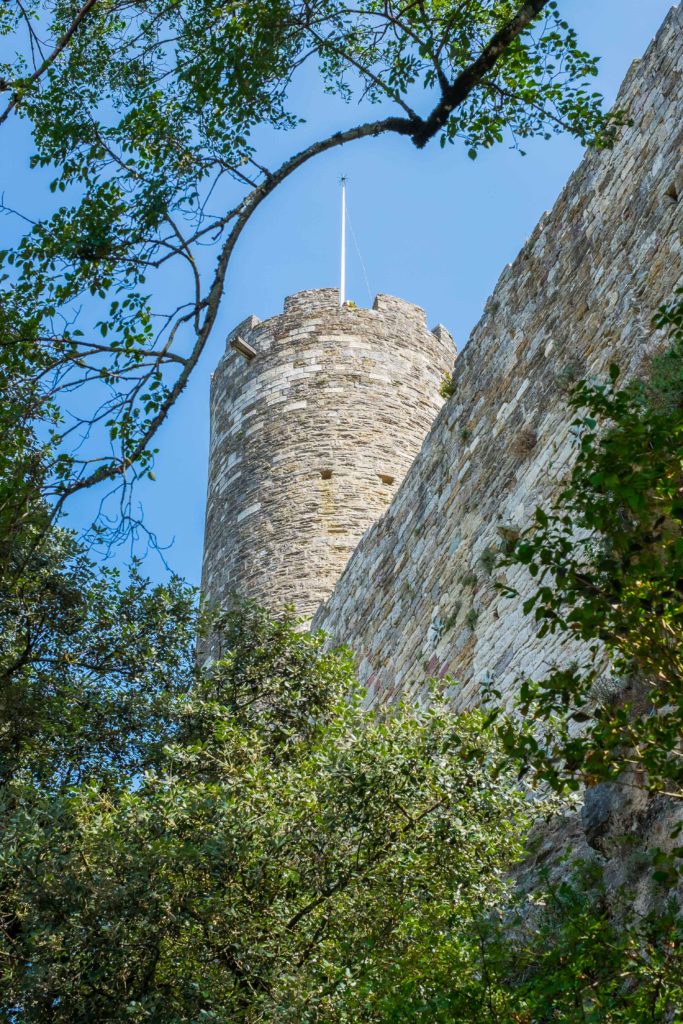
“Being French was not a source of personal pride, let alone the basis of a common identity. Before the mid-nineteenth century, few people had seen a map of France and few had heard of Charlemagne and Joan of Arc. France was effectively a land of foreigners.”
- Graham Robb
In fact, many of the administrative structures and the elements of central government that bind together the modern nation of France didn’t exist until Napoleon and his successors created them in the 1800s.
So maybe it’s not surprising that the official representative of the local Tourism office in Turenne says, “our town was not ‘in France’ until the 18th century.” That might sound like an odd observation for village that’s buried so deep in the heart of the Corrèze region of central France, but that’s the very first thing out of her mouth in the town’s YouTube video. It’s also a point they seemed anxious to make whenever the subject came up during my recent visit there.
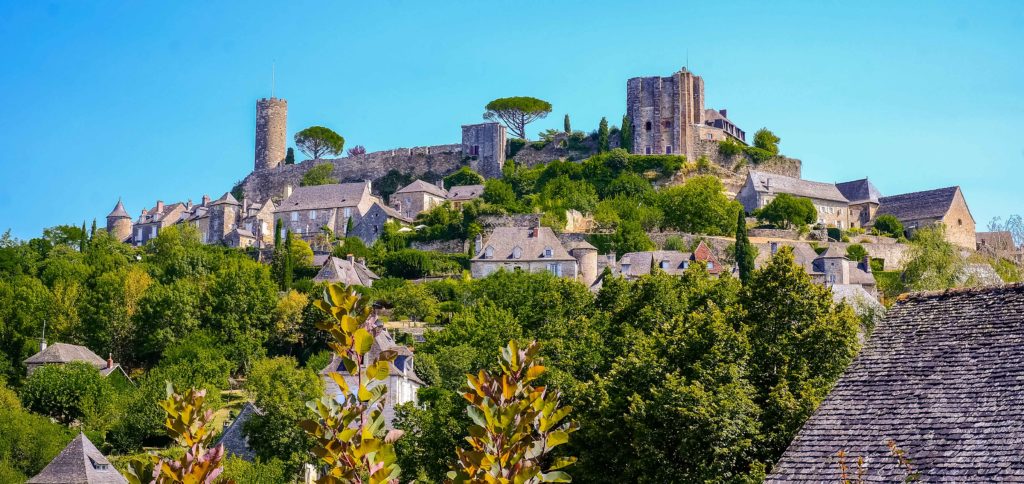
A powerful and independent ruler
Why was Turenne “not in France” for so long? Because it was ruled by a powerful series of Vicomtes, starting in the 800s C.E. , when the Comborn family ascended to power. They held onto it for 400 years, minting their own money, levying their own taxes, organizing their own armies, granting their own noble titles – and while they did formally pay an annual “tribute” to the Kings of France, they essentially operated on their own, outside the authority of the King.
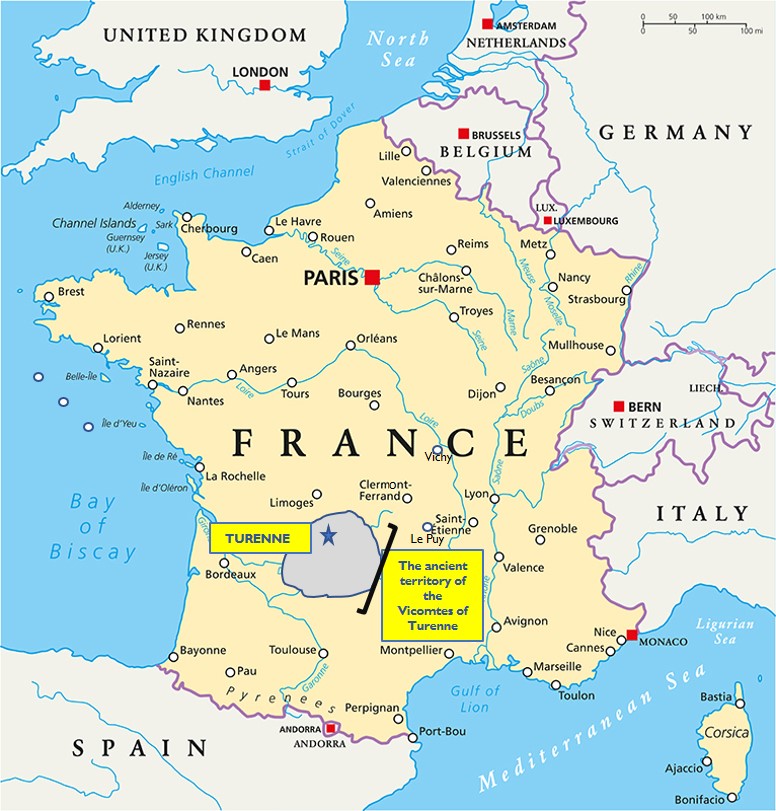
Three other families occupied the Vicomte’s throne from the 1300s to 1738 (although to be fair, the Tour d’Auvergne family, the same family that produced Catherine de Medici, dominated this period, holding the title from 1444 to 1738). Like the Comborns, they enjoyed similar benefits and independence. And the territory they controlled was vast – a chunk of 1,200 villages and several abbeys that extended across the modern départements of Corrèze, Dordogne, and Lot.
It’s hard to overestimate the influence these families had on the rest of the country. Two of the Avignon Popes came out of the de Beaufort family. Even more notably, Henri de la Tour d’Auvergne was close to King Henry IV of France (and went to war on the Protestant side of the Wars of Religion with the King) and also held the title “Prince of Sedan.” His son, Henri, was one of the great military strategists in the long history of France; he served King Louis XIII and King Louis XIV as Marshall of their armies, earning the popular nickname of “the Great Turenne” for his leadership.
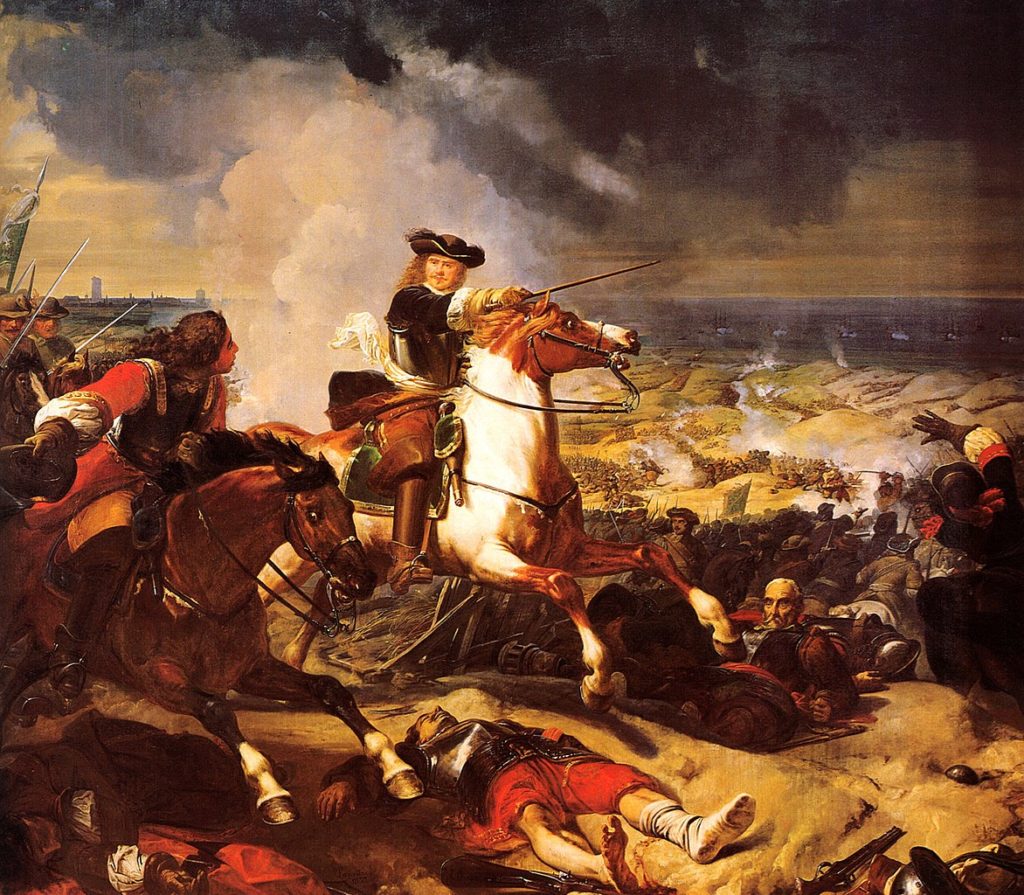
Easy to see, then, how Turenne earned its place in a clever (and rude) French pun about three of the main towns in this part of the country:
« Pompadour pompe, Ventadour vente, Turenne règne. »
(My Michelin Green Guide delicately says this pun “defies translation”, but the essence is “Pompadour sucks, Ventadour blows wind, Turenne rules.”)
The castle dominating the skyline
As I approached Turenne from the south, I had some idea how it would look, but I really was not prepared for how dramatically it juts up from the horizon. About 800 people live here now, and the village itself has some beautifully restored medieval and Renaissance houses that serve to remind me of the town’s rich history.
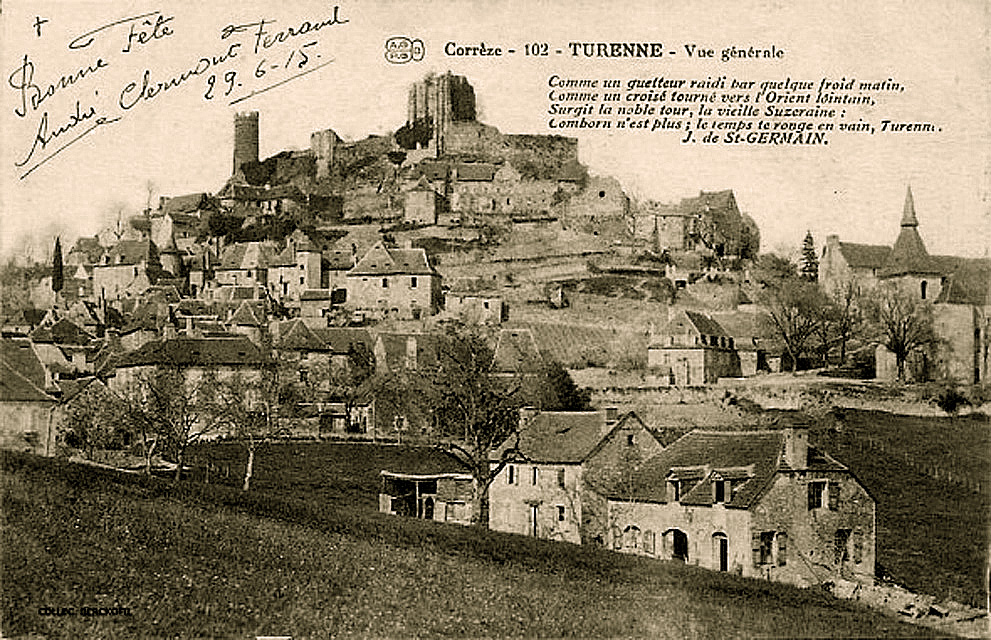
The dominant feature, of course, is the ruin of the great Chateau sitting at the top of a limestone peak on a platform of 1,500 square meters (about 16,000 square feet). Be ready for a steep climb if you want to see it – I counted a total of almost 300 steps to get from the parking lot up to the entry gate.
The platform is surrounded by the castle walls that began to take shape here in the 9th century CE. Like so many properties in this part of France, the Chateau de Turenne changed hands frequently over the centuries as the Hundred Years War and the Wars of Religion raged on; we know, for example, that England’s King Richard “the Lionheart” held it for a while in 1188.
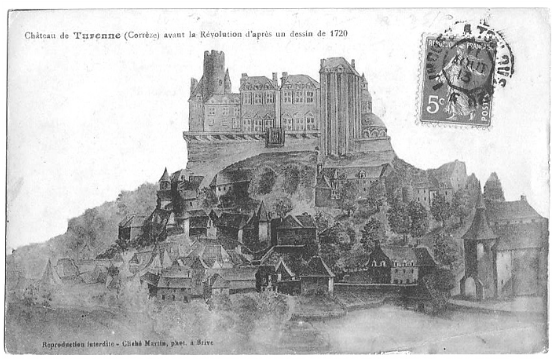
It stayed in the hands of the Vicomtes of Turenne, though, until 1738, when the last Vicomte (Godfrey de la Tour d’Auvergne) was forced to sell it to King Louis XV to pay off his gambling debts. The independent “state within a state” was over – the King integrated all its territories and ordered the destruction of most of the buildings within the castle’s walls.
All that remains today are two structures:
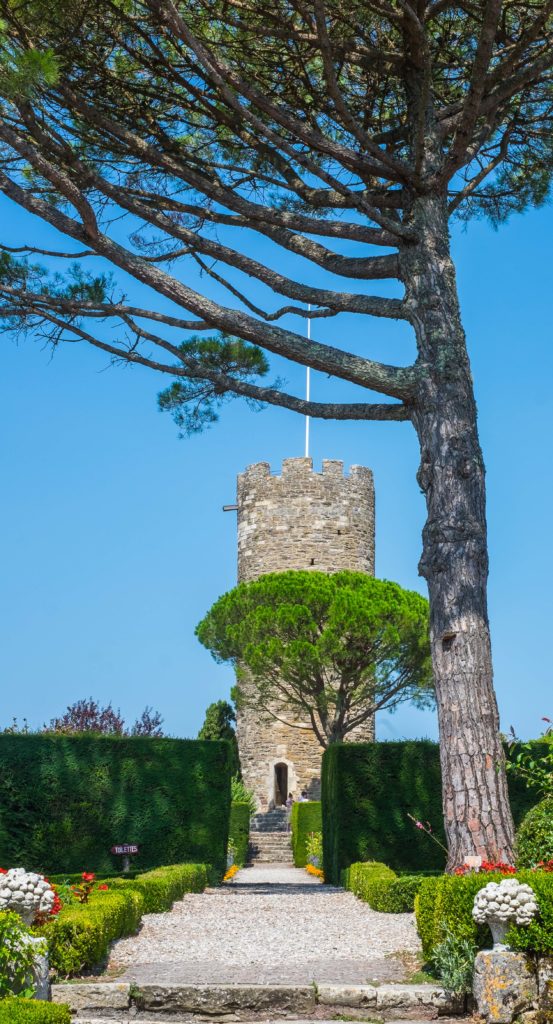
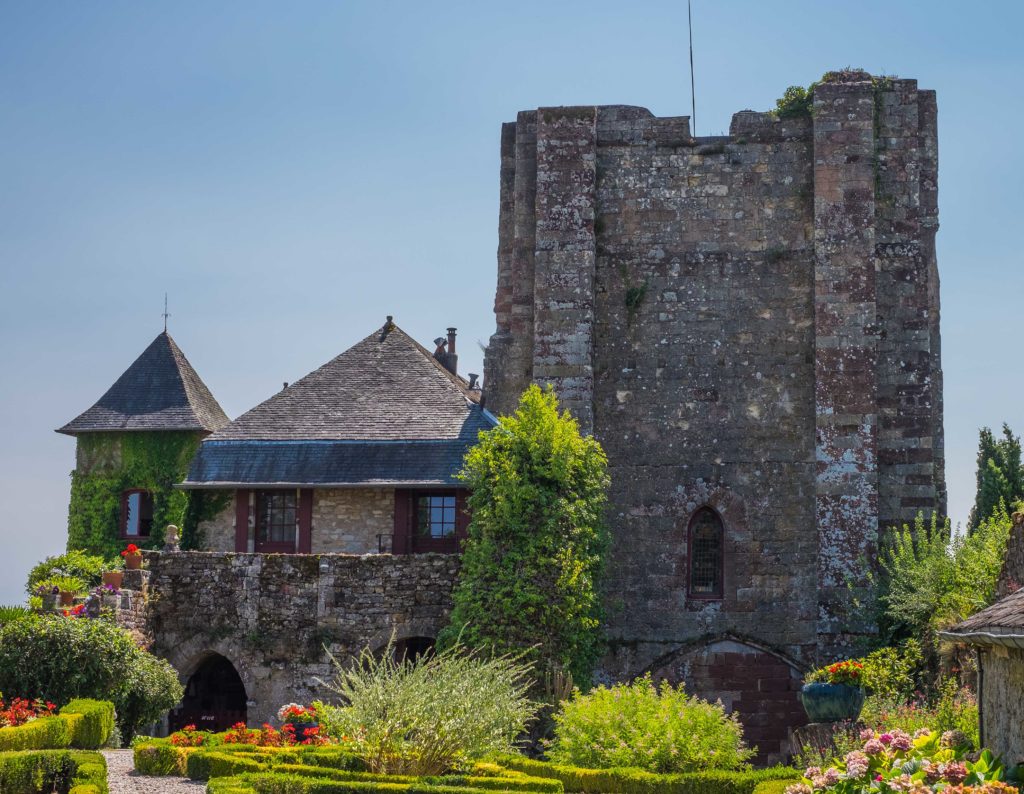
The empty spaces between these two remnants have been filled in with a beautiful formal garden, and the views from here are spectacular – you can see the mountains of the Cantal off to the east, and the Dordogne river valley to the south.
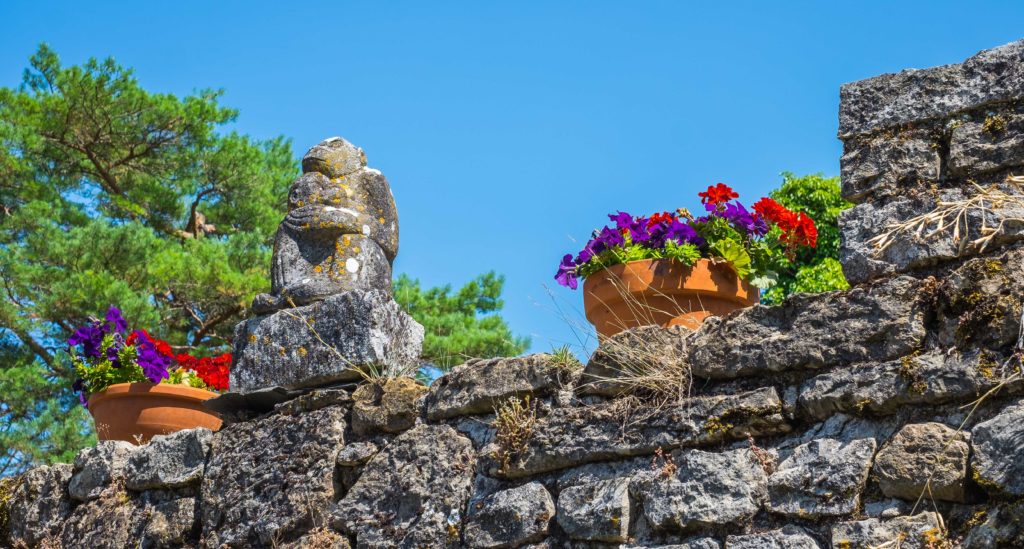
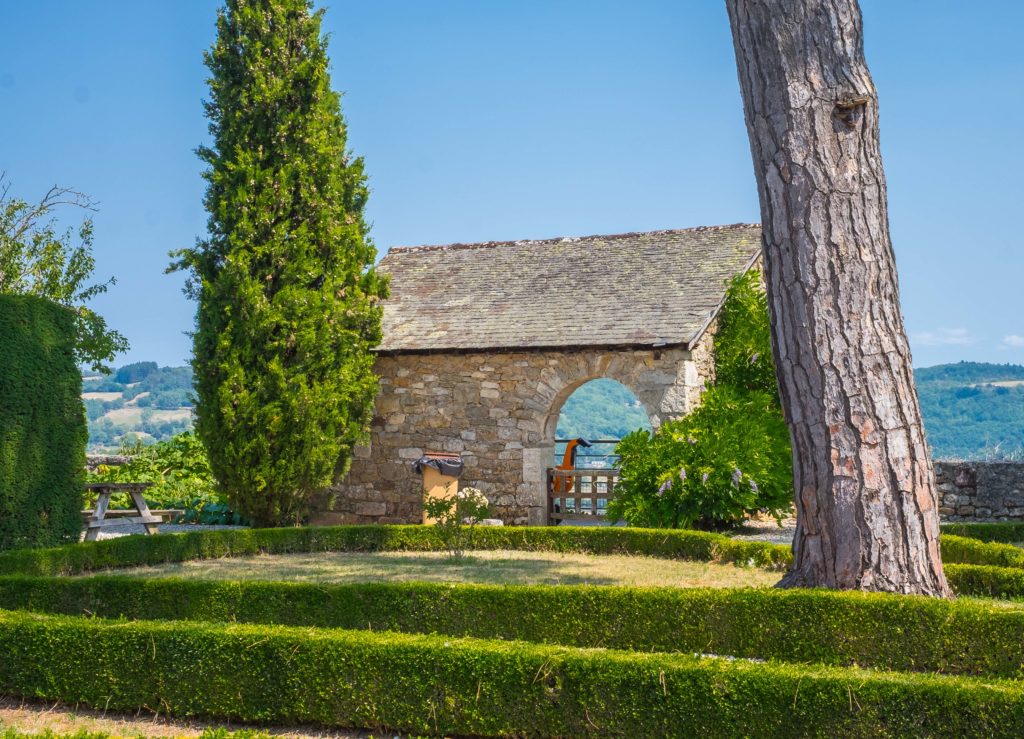
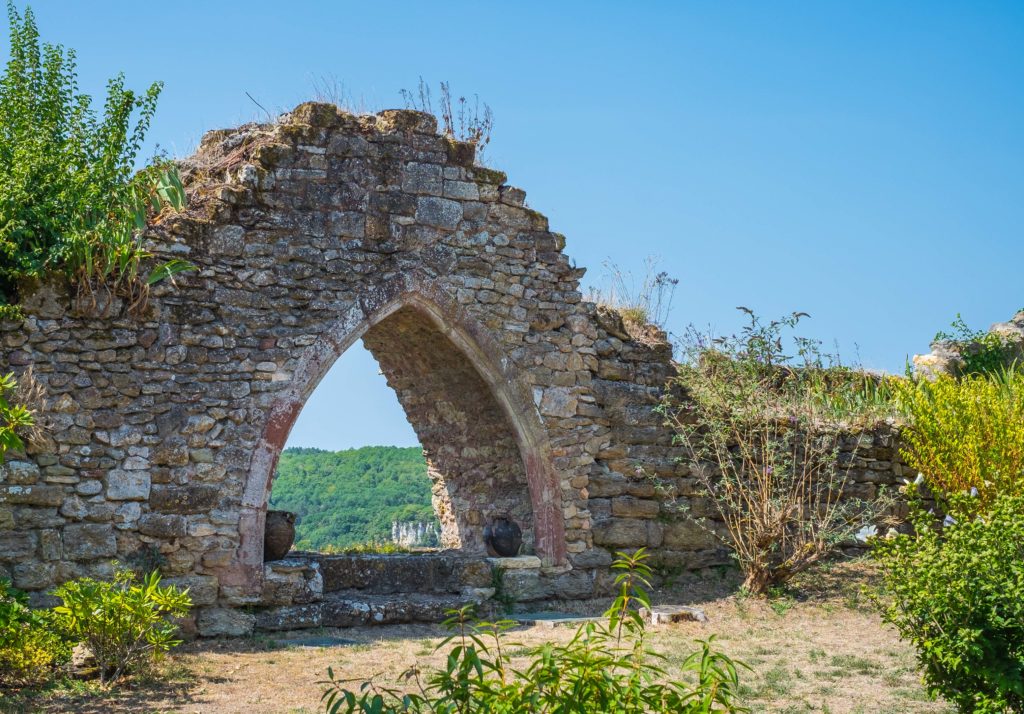
A church with an unusual history
The walk back downhill is obviously much easier and gave me a chance to visit the church of Notre Dame – Saint Panthaléon. You might almost think it’s that rarest of buildings in France – a Protestant church – because of its simplicity and lack of decoration. In fact, there’s a local legend that says it was conceived by a pious Protestant noblewoman, although the official story is that it was constructed by the Catholic Prior of Turenne and paid for by the Vicomtes. Built between 1600 and 1680, it sits apart from the center of town, and (as the sign says) looks “almost military in its austerity”.
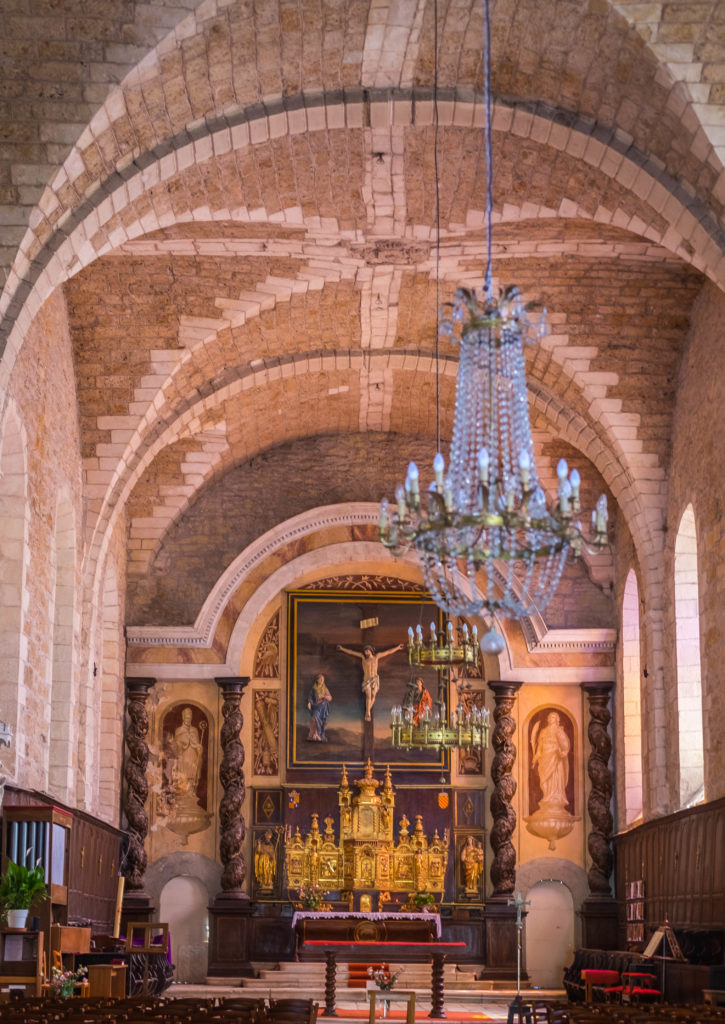
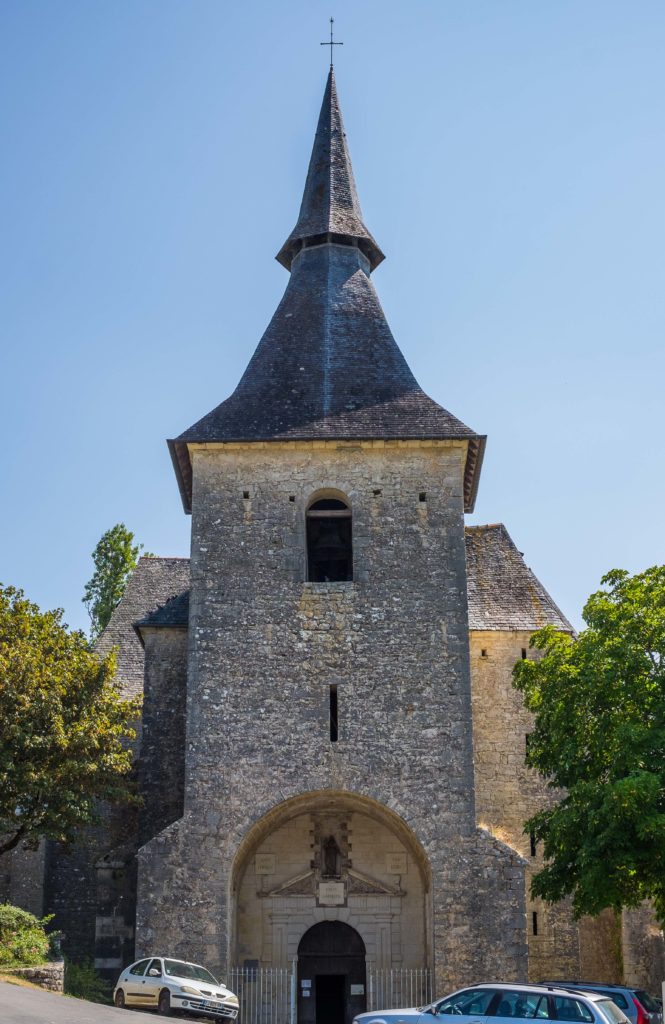
Visiting Turenne today
With its required sites of historical importance and its beautifully restored medieval center, it’s not surprising that Turenne is officially on the list of “most beautiful villages in France”. It has 5 restaurants and 1 hotel (plus another 40 or so places offering rooms for rent to tourists). You can even rent a nice little room inside the walls of the chateau for 80 Euros a night (including breakfast) in the high season of July and August.
Because it’s in a part of France known for its natural beauty, Turenne also makes a good base for anyone wanting to get outdoors; the town boasts 5 different “managed” walking trails totaling 43 km (26 miles) in the surrounding region.
It’s a village with an unusually distinguished past – a center of real power in a place that existed outside of “France” for more than 800 years. I found myself wanting to come back for a longer stay, giving myself time to dig deeper into the history behind its medieval facades!
Have you visited other “most beautiful villages” in your travels around France? What did you like best? Please tell us your experience in the comments section below. As always, I’d be grateful if you’d also take a second to share this post with someone else by clicking on the button(s) for your preferred social-media platform(s).
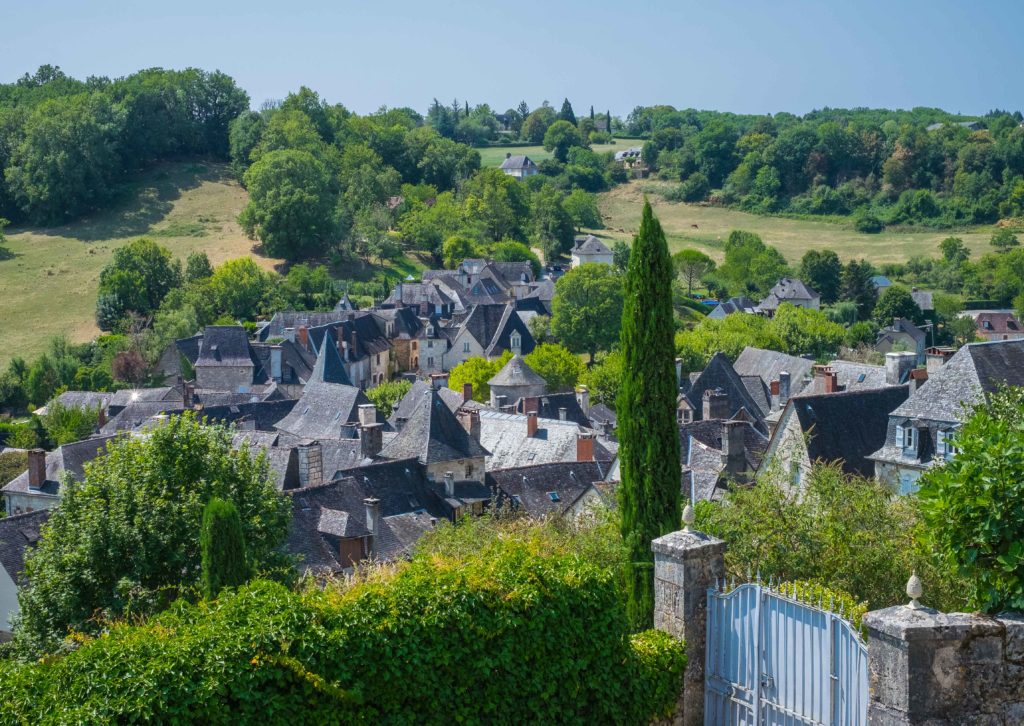
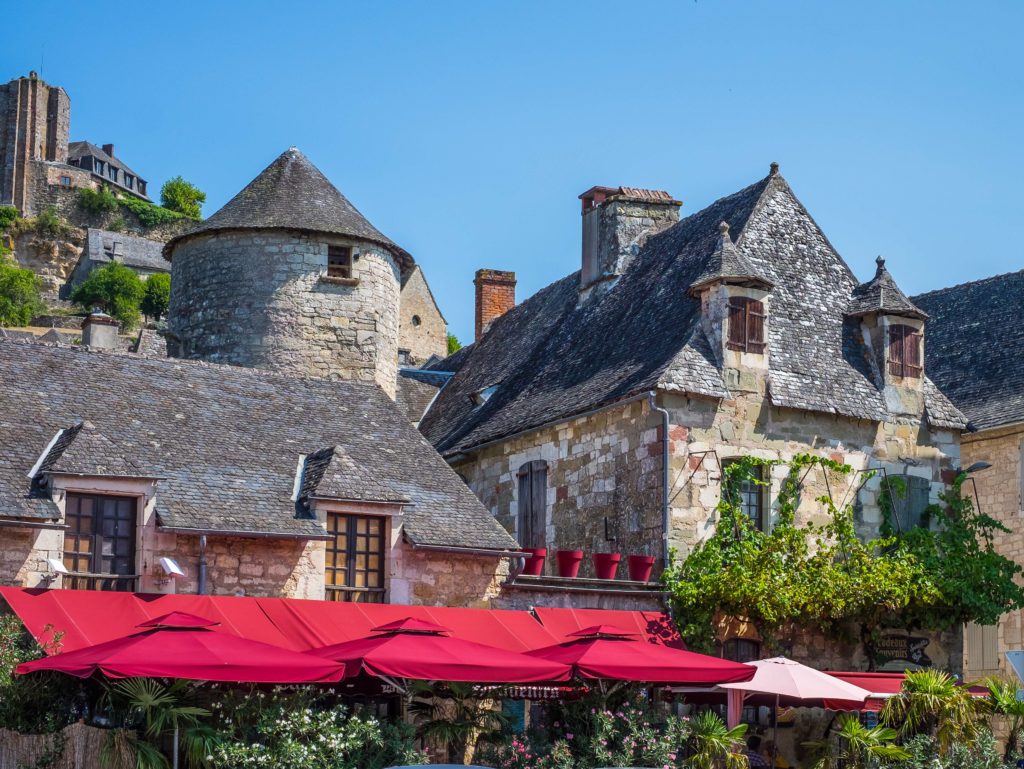
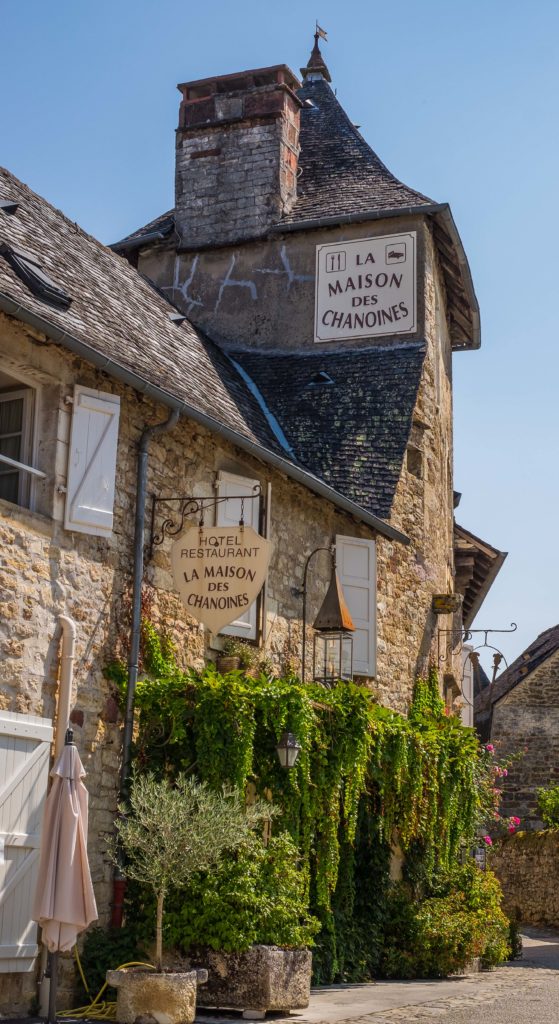
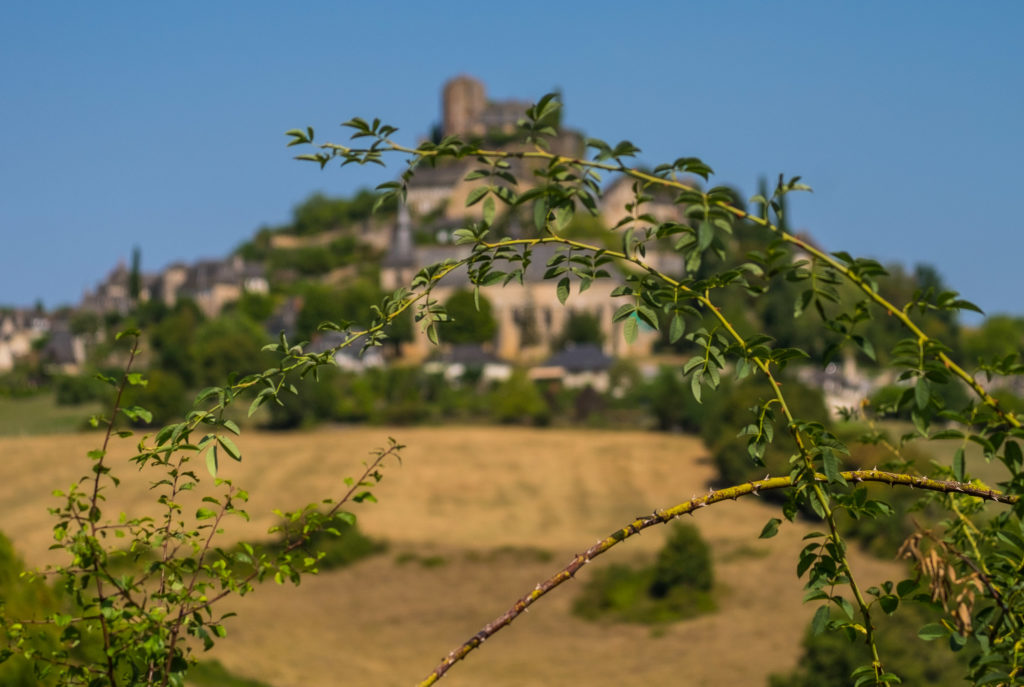
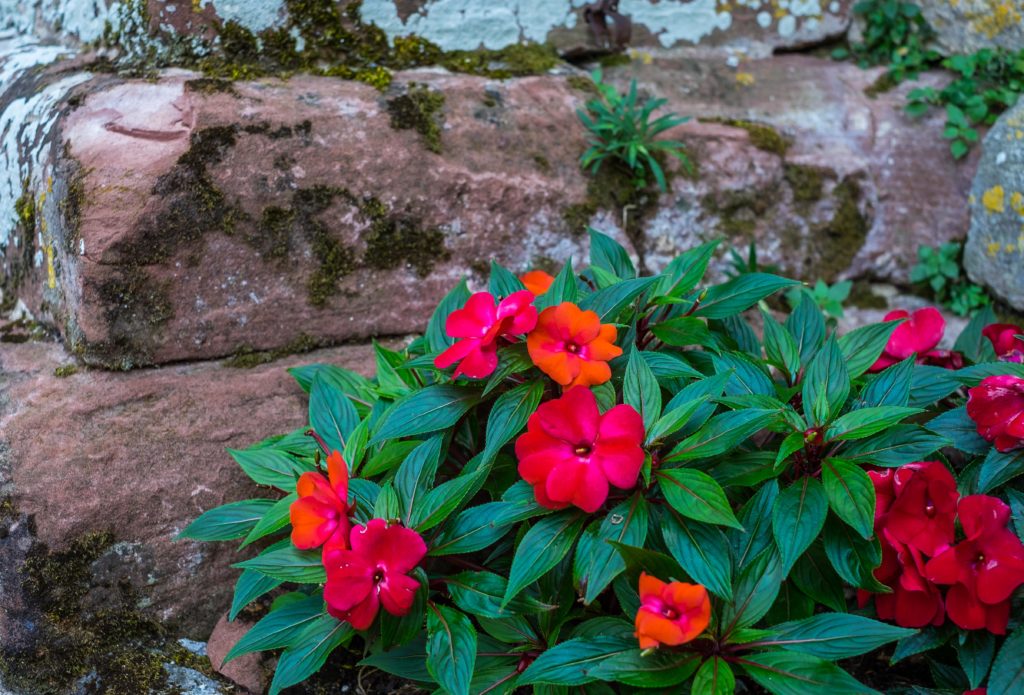
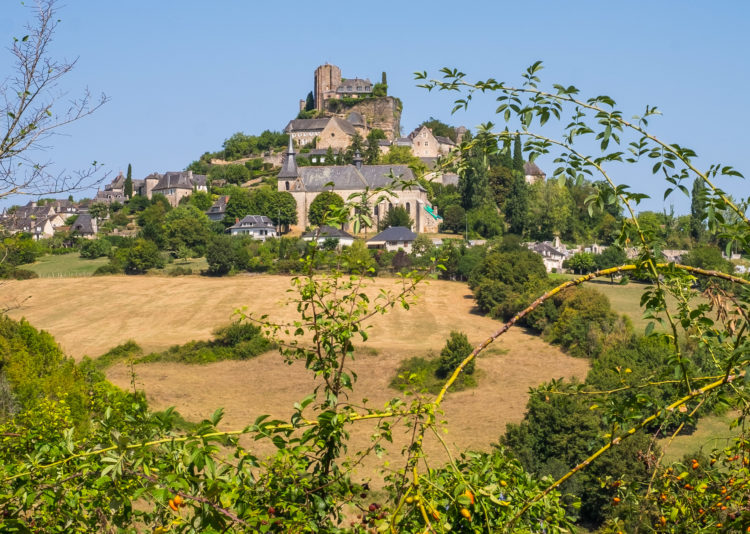

Très belle surprise. Je n’avais jamais entendu parler de ce village. Superbe. Me donne vraiment envie d’y aller. Quelle est la ville la plus proche?
Belles photos.
Bonjour Elisabeth – et merci de tes commentaires ! Turenne se situe à 20 mins (15 km) au sud-est de Brive-la-Gaillarde, et à 1 heure (50 km) au nord-est de Sarlat-la-Canéda. Pour les Auvergnats comme pour les Bordelais(es), il faut compter 2 heures et demi de route en prenant l’autoroute A89 (direction Brive) ; Turenne est à distance égale entre les 2 villes.
Merci encore de ta visite sur le site !
Et bien sûr un excellent rappel historique de l’époque de Turenne, militaire de 1er ordre, resté dans l’histoire de France.
It must have been a hard call to list the most beautiful villages – there are so many of them! But I am sure that the Turennois feel very French after the world cup! Another well researched and interesting post from a true francophile. Je suis tout a fait d’accord avec Elizabeth et je suis interesse tellement de votre ecriture, Richard. Merci encore une fois.